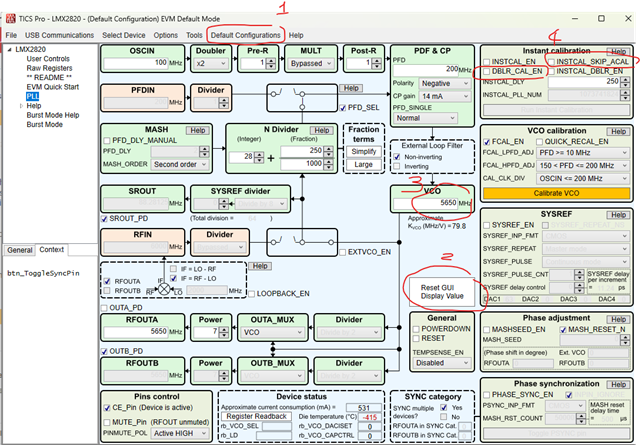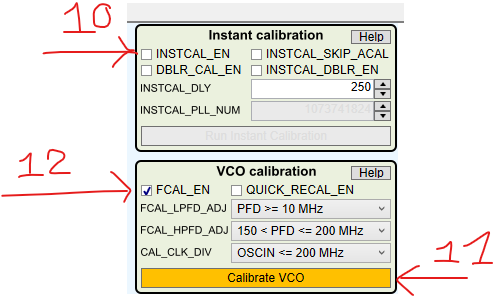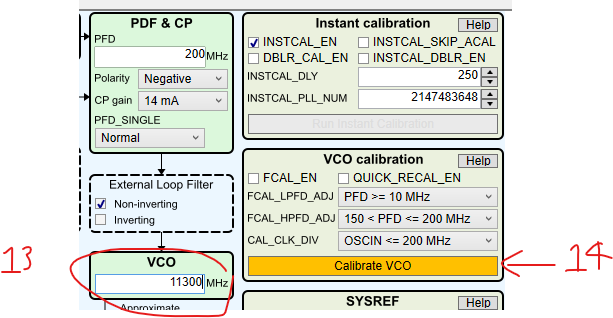Tool/software:
Hi,
It looks like VCO frequency ranges are different than the ones on the datasheet. For example, in VCO 7 after 11150 MHz, LD fault probability is so high. It is better to use output doubler to have frequencies higher than this frequency. Is it common or does the LMX2820 I have has a problem?
Does the frequency ranges of the VCO's change sample by sample? I only have an eval board, don't have a chance to test multiple LMX2820's.
Do you have any updates or recommendations about the VCO frequency ranges?
Regards,
Turker







